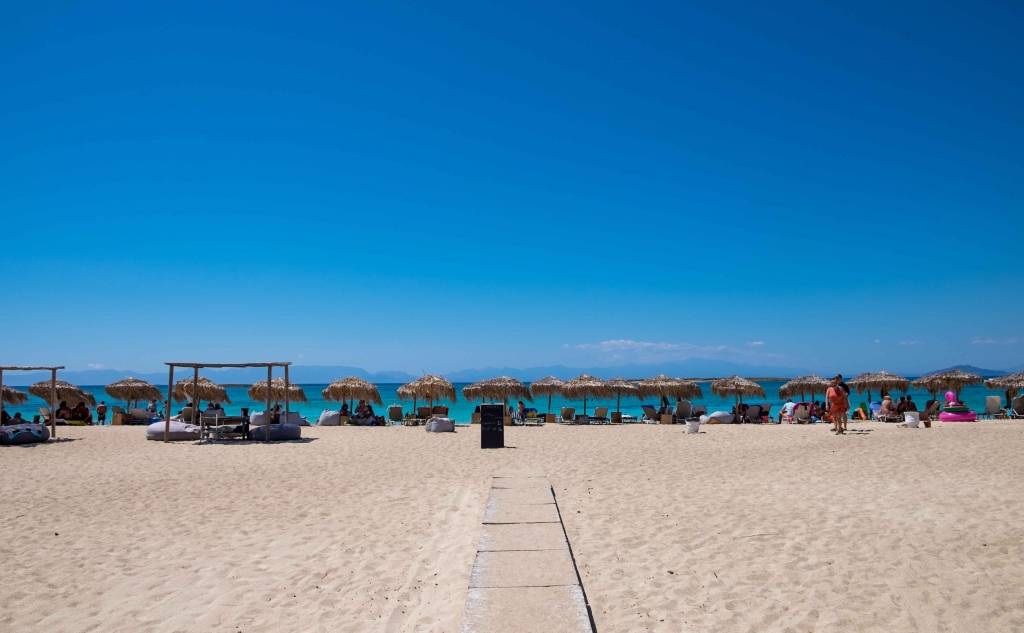Panagitsa Beach
The beach of Panagitsa or Limnitsa is to the west of Elafonisos. It is so named because, in winter, stagnant water from the flood and rain create a small lake inside the beach.
The magnificent, organised beach is evenly paved with golden sand. Its bottom is rich in flora, which makes it ideal for underwater exploration. The beach is perfect for moments of relaxation next to the cedars that literally sprout through the sand. Characteristic of the beach are its four islands: Xeropoules, Lepto Island, Prasonisi and Kassela. Outside the Panagia Islands (as they are known), the Second Venetian-Turkish Battle of Elafonisos took place in 1717.
Higher than the beach, visitors can see the church of Panagia or "Panagia of Katonisiotissa". It was built (around 1895), on a hill, on the site of an older Byzantine temple. It was renovated in 1928, and above the entrance, there is a built-in inscription with names. Inside the sanctuary, there are still old frescoes, while the visitor can admire the icon of the Assumption of the Virgin Mary (1855). Outside the church, the 1878 brass bell is preserved and has printed representations – icons on it. Around the church, there are indications of the Mycenaean civilisation, such as tombs and various objects. Finally, at Panagia Katonisiotissa, there is also the small cemetery of Katonisiotes.







